A new wave of one-room guesthouses is on the rise. With their peculiar charm and unique designs, one-room hotels seem to be redefining luxury among travelers. Very likely, that in the aftermath of the pandemic, they may soon be gaining popularity for those favouring a detached living space on their journey.
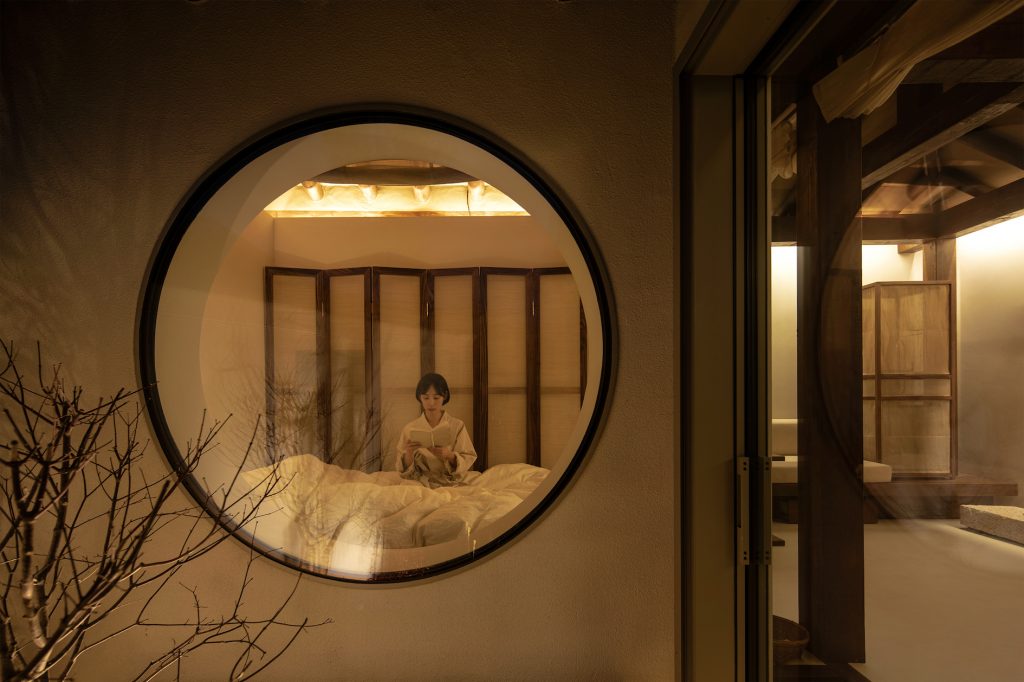
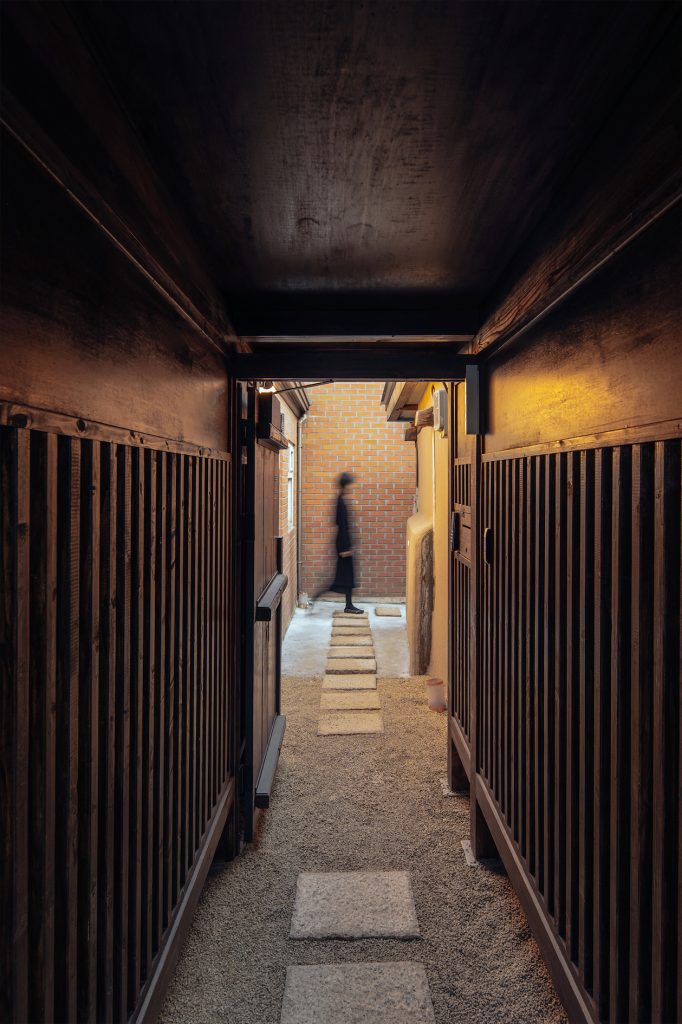
Nuwa by Z_Lab (also header image)
The version of the micro guesthouse by Korean design group Z_Lab is situated in a narrow alley in Seochon, one of the oldest neighborhoods in Seoul. Nuwa House is a tiny living space of less than 33sqm that reimagines the Hanok, a traditional Korean home. The concept uses the Korean term ‘Wayu’ – interpreted here in a modern sense – as a guiding principle for the living space. “Figuratively, it means enjoying paintings or books describing the landscape or historical sites, or appreciating small gardens at home when the time to go out into nature is not possible,” explains Junghyun Park, the studio’s principal designer.
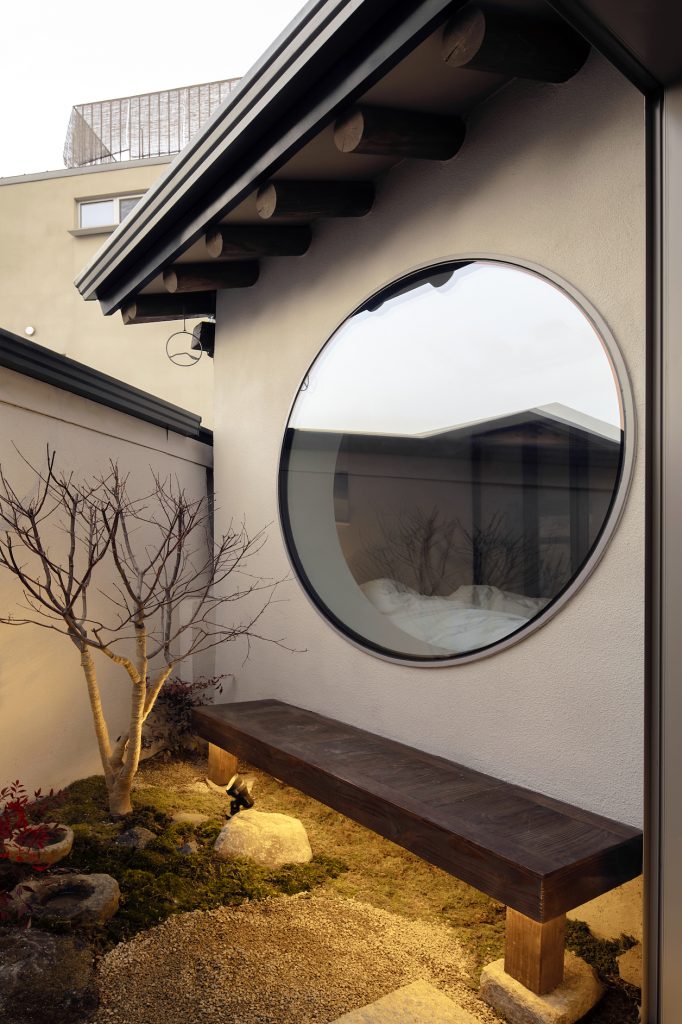
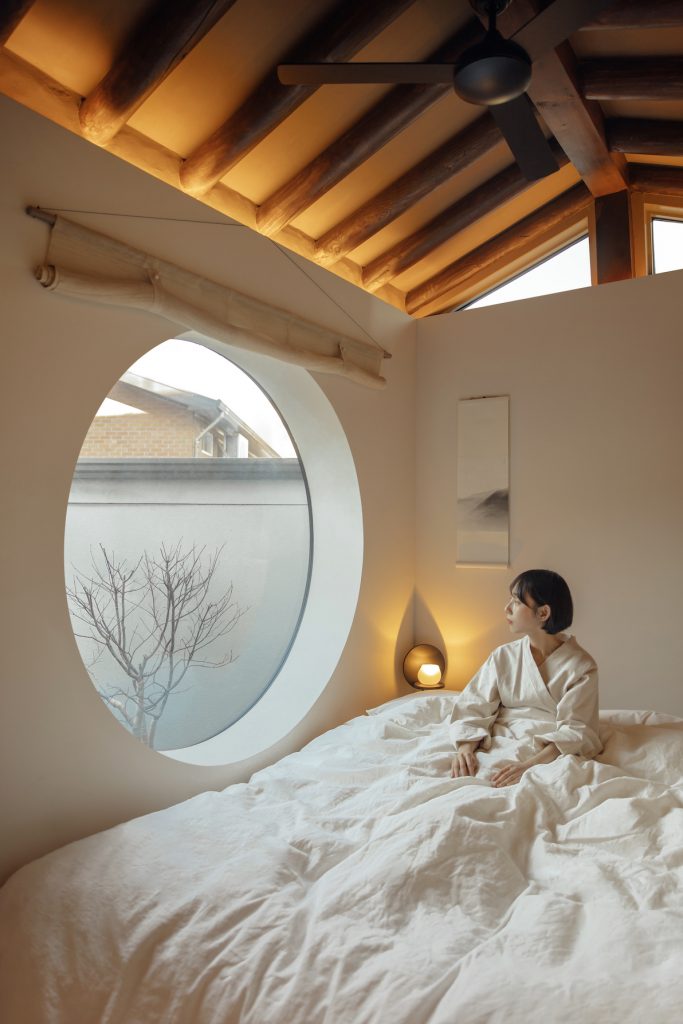
Nuwa by Z_Lab
According to the Wayu principle, the space is designed to enable the guests to contemplate the small yet vibrant outdoor garden. The garden can be appreciated from the sleeping nook, which is set right beside a large porthole, or while soaking in a warm bath.
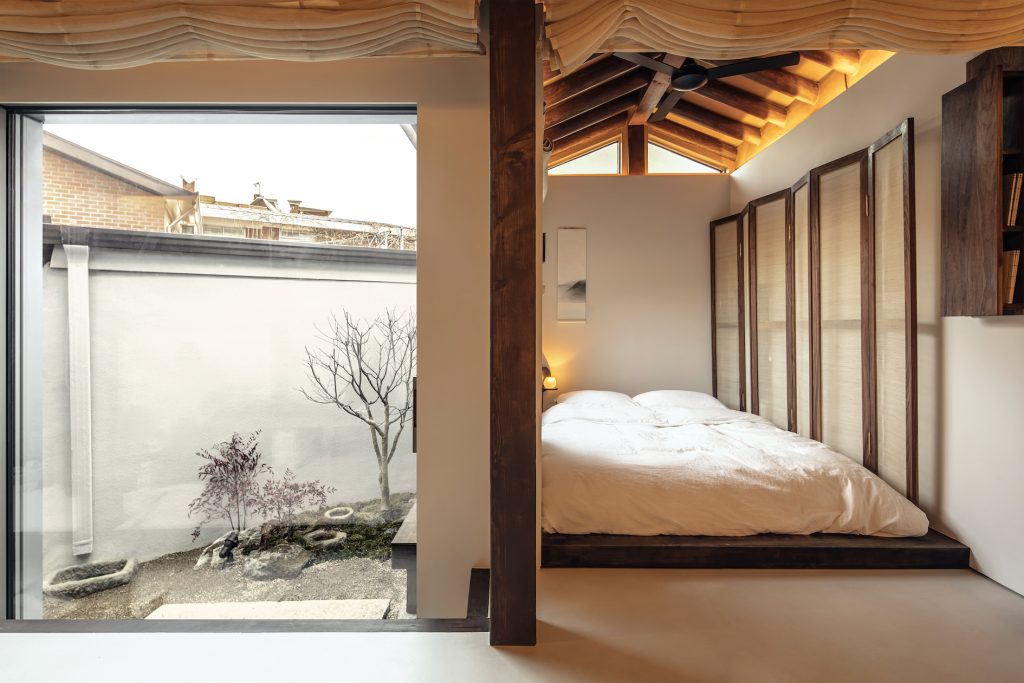
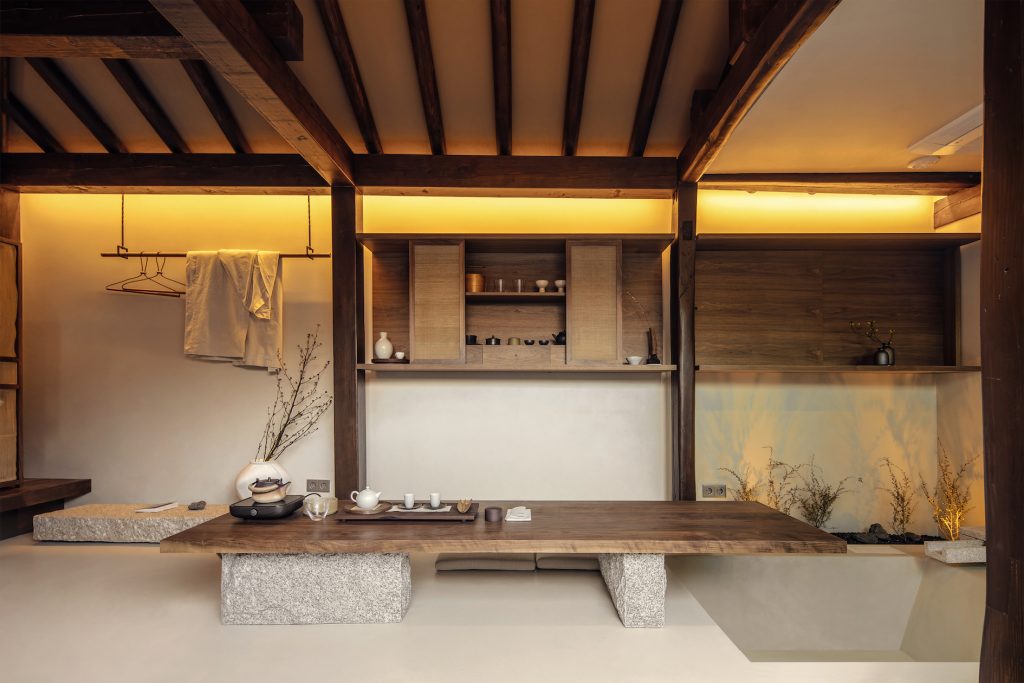
Nuwa by Z_Lab
The material palette is based on the use of natural wood and stone that add to the serenity of the interior. Aiming to visually expand the small place, the team chose to use only one material to finish the floor.
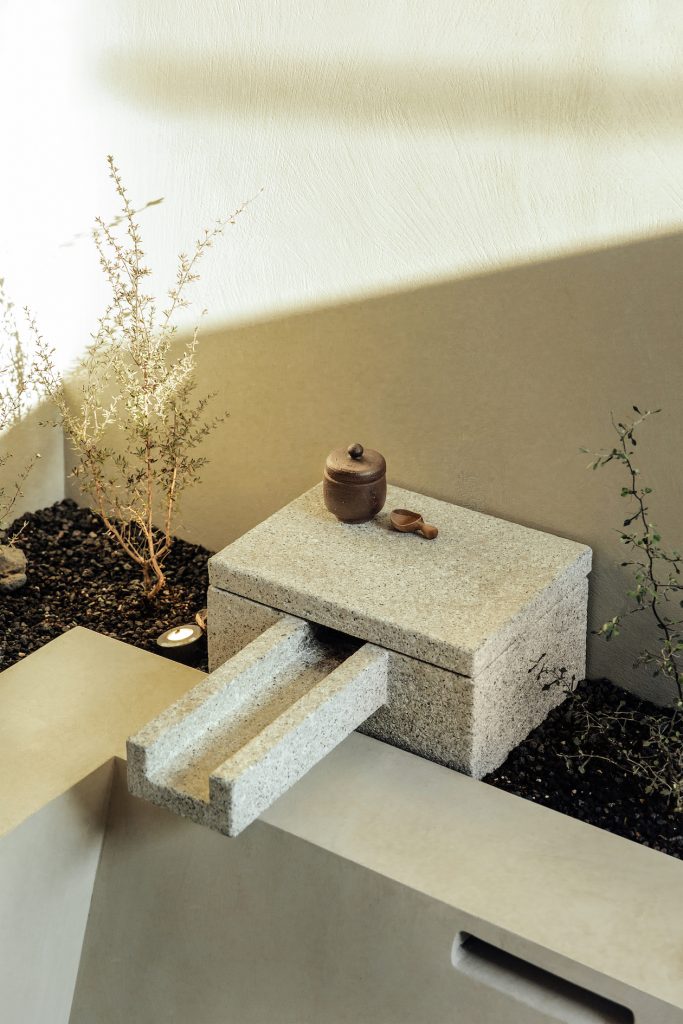
Nuwa by Z_Lab
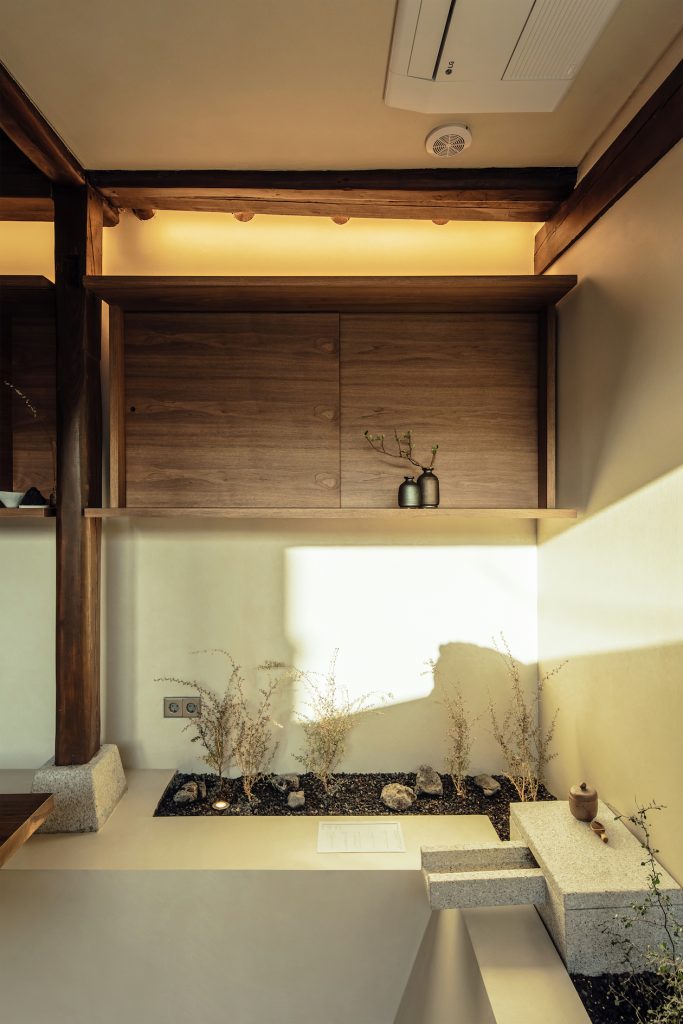
Every element in the room, from small lamps and a picture scroll to folding screen, low timber bench and a long walnut-wood table with a rough stone base, its size and location, was designed meticulously specifically for Nuwa, offering guests the ultimate space for meditation.
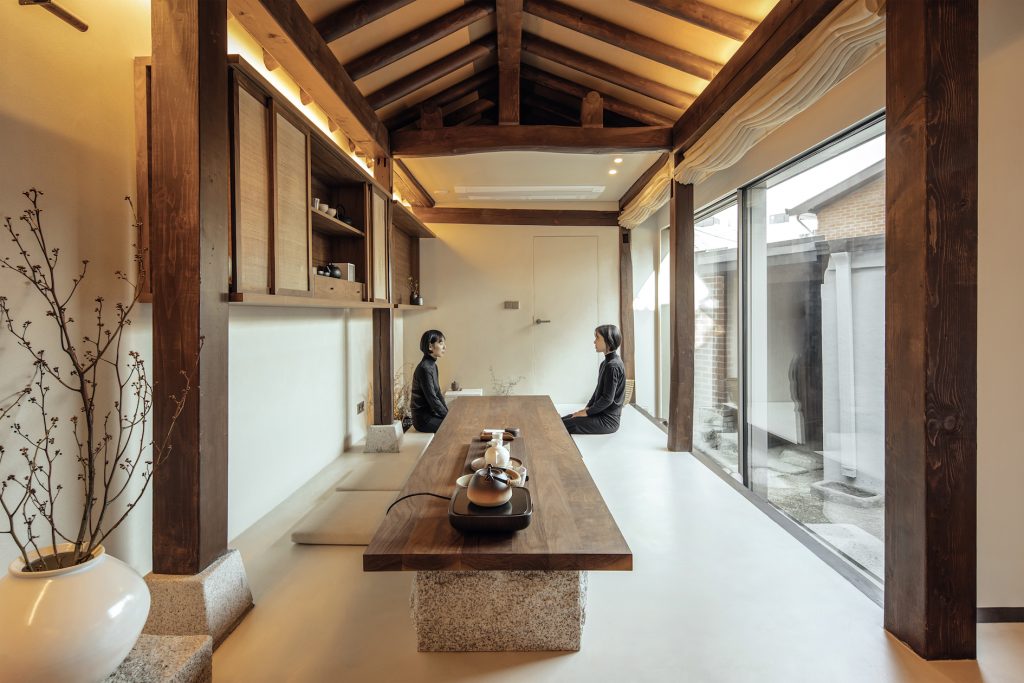
Nuwa by Z_Lab
Nuwa holds an elegant style from the past but at the same time embraces or redesigns elements of modern convenience such as an electric cooktop, a sink, a fridge, all while minimizing the visual imbalance between past and present.
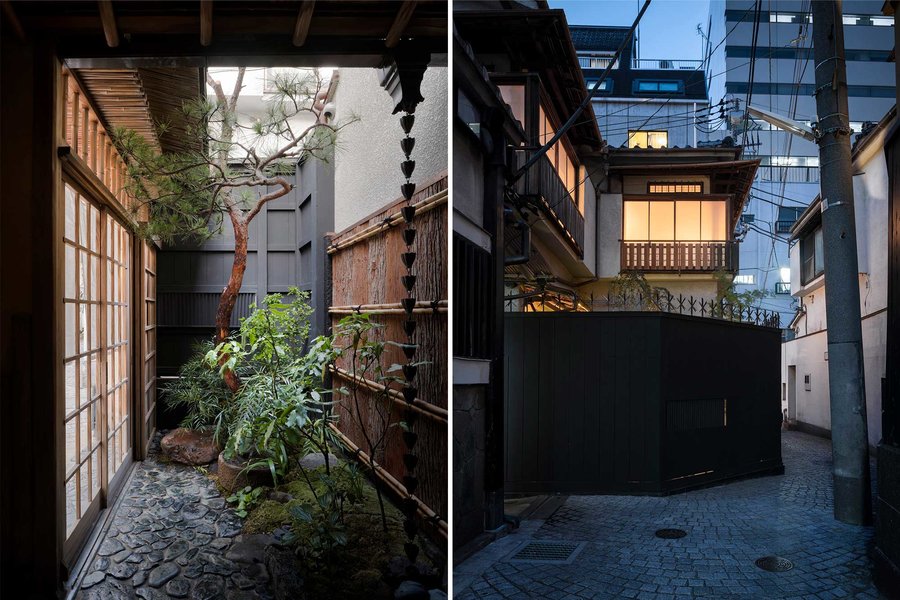
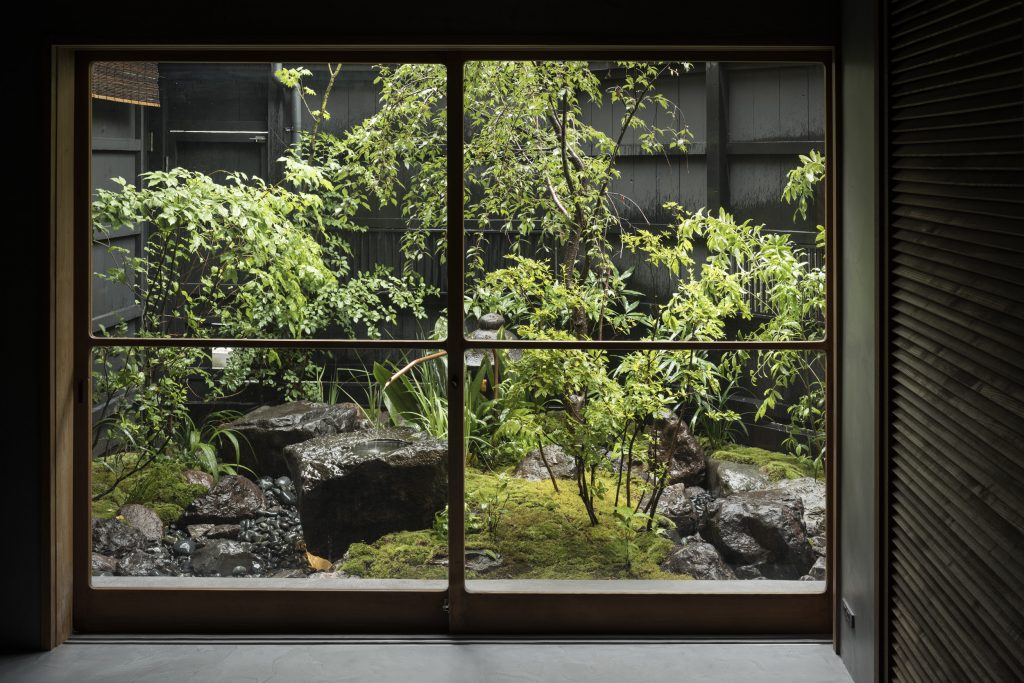
Trunk (House) by Trunk Atelier and Tripster (ph: Tomooki Kengaku)
Tokyo-based hotel brand Trunk has collaborated with the local design studio Tripster to create a one-bedroom boutique hotel in Kagurazaka neighbourhood inspired by the salons found in the Japanese capital in the past. The design seeks to create a contemporary version of these spaces where artists and creatives in and out of Japan would share ideas and exchange thoughts.
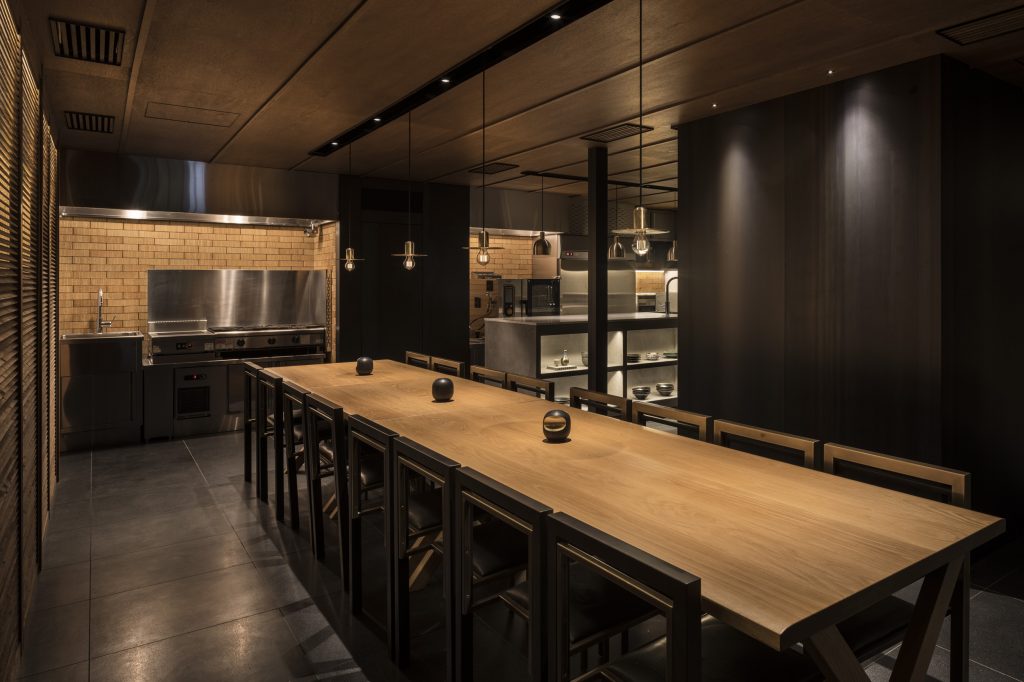
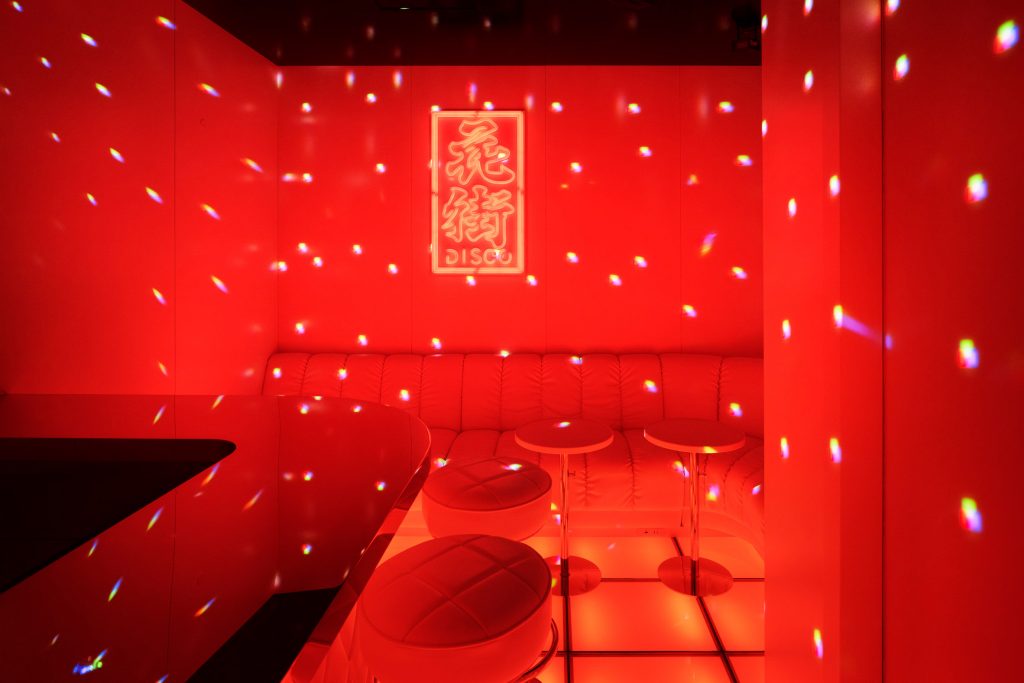
Trunk (House) by Trunk Atelier and Tripster (ph: Tomooki Kengaku)
The focal point of the Trunk (House) boutique hotel is its own miniature nightclub, which comprises a bright-red room and boasts a curved drinks bar, glittering disco ball and illuminated dance floor, as well as a karaoke machine for guests to use.
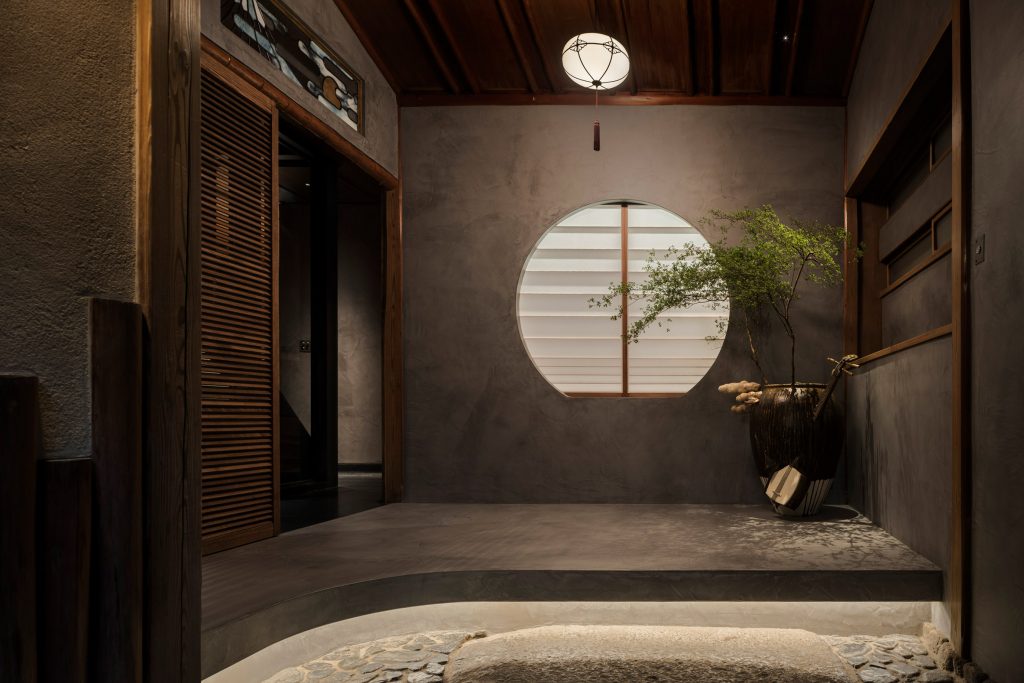
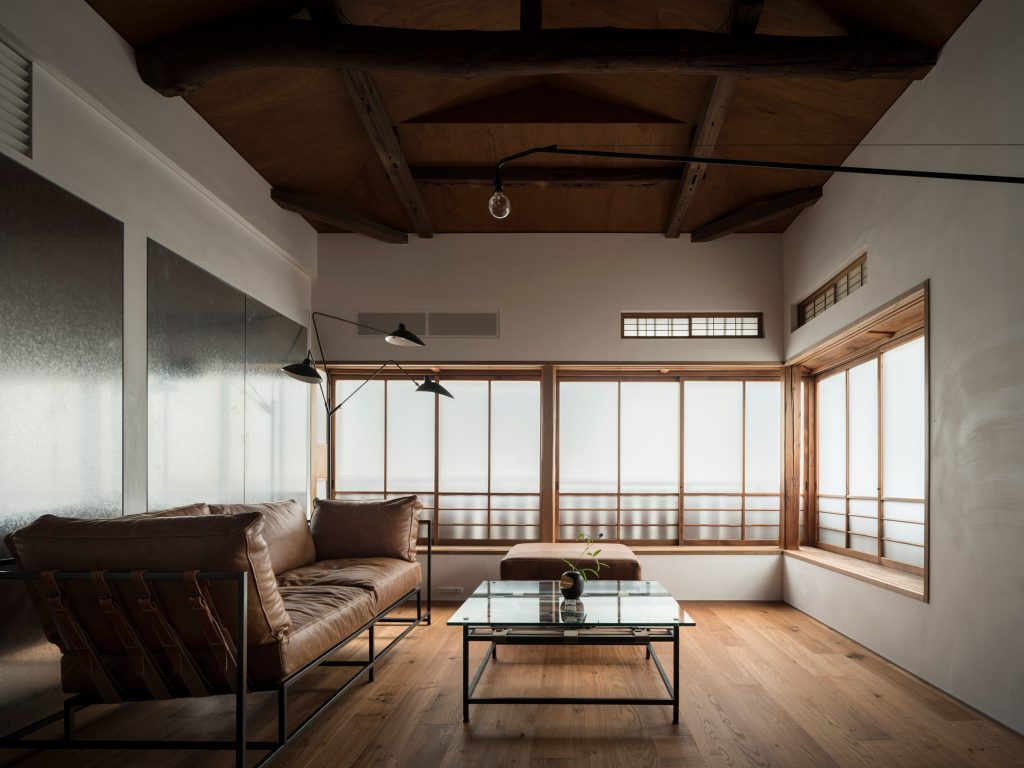
Trunk (House) by Trunk Atelier and Tripster (ph: Tomooki Kengaku)
The rest of the guesthouse takes cues from traditional Japanese aesthetics. The hotel is accessed via a small foyer with grey mortar walls, which is designed to resemble a genkan, the recessed floor area at the entrance of Japanese homes, where visitors remove their shoes before stepping into the house.
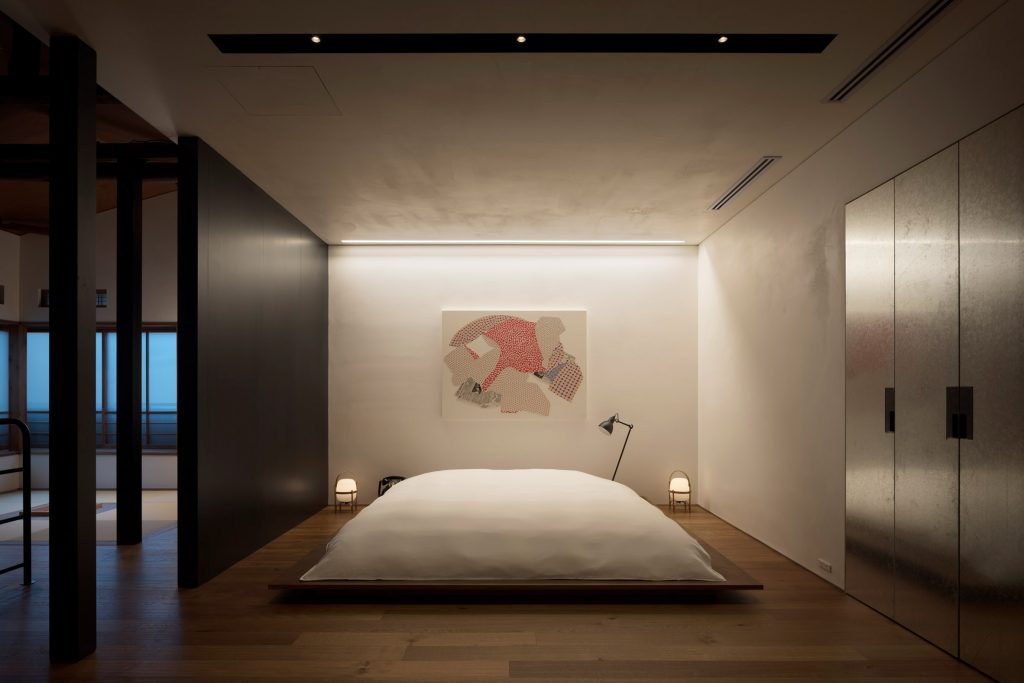
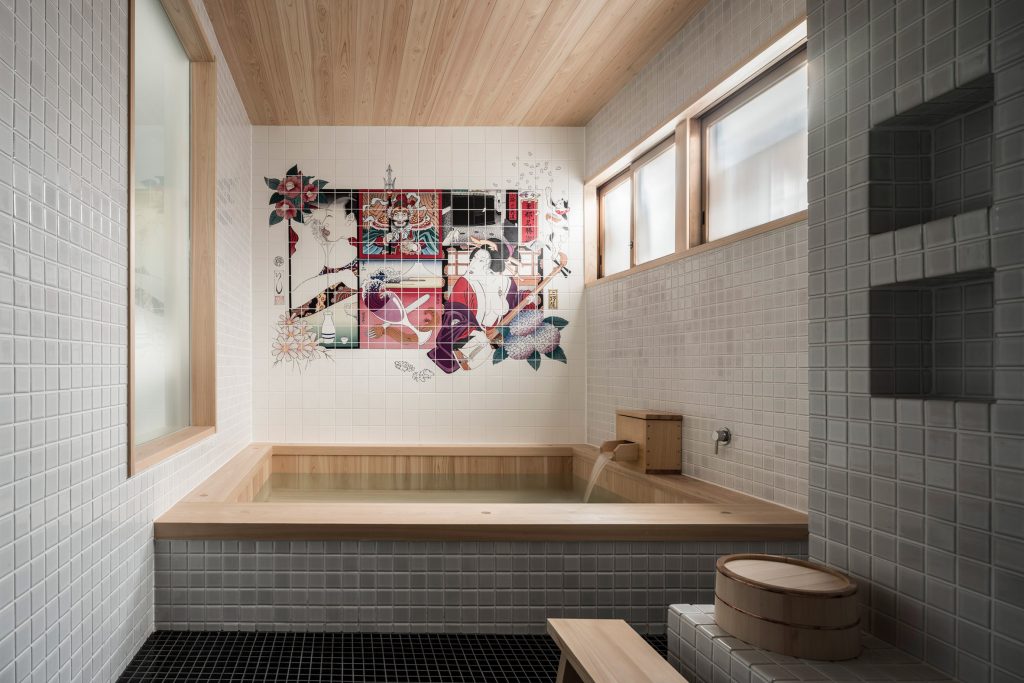
Trunk (House) by Trunk Atelier and Tripster (ph: Tomooki Kengaku)
The master bedroom features a futon mattress perched upon an elevated wooden platform, while the bathroom is dominated by a huge square bath crafted from cypress wood. The dining room overlooking a small courtyard and an open kitchen has almost-black walls and is organized around a long oak table. The guests can relax in a tearoom with tatami mats arranged around a sunken fireplace or in the sitting room, which is dressed with a chunky brown-leather sofa.
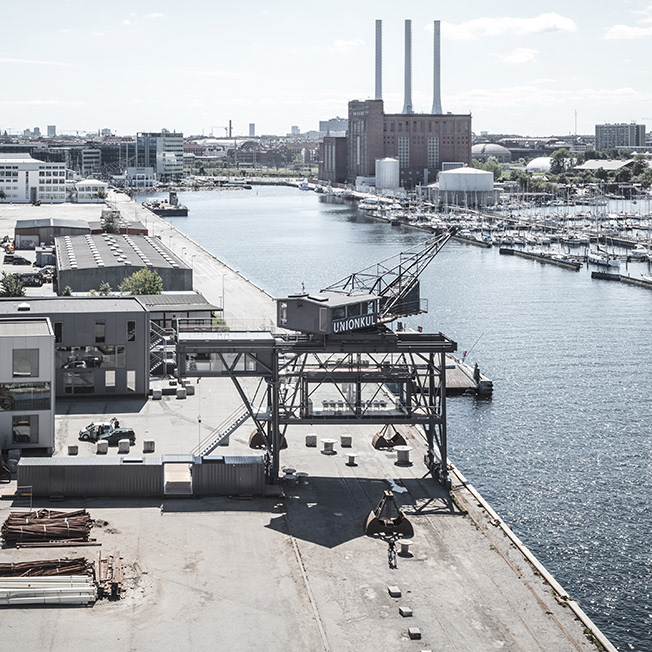
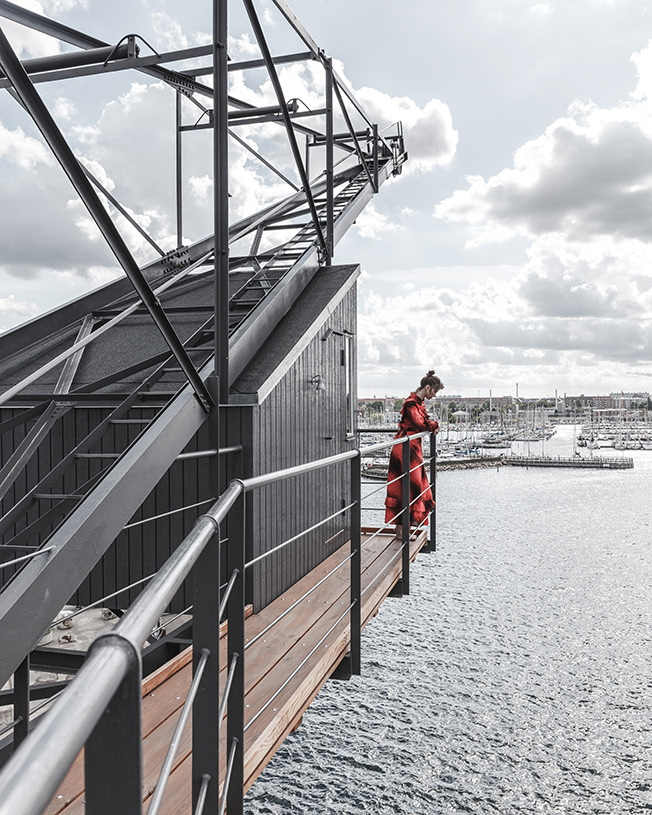
THEKRANE hotel by Arcgency (ph: Rasmus Hjortshøj)
Copenhagen-based architectural office Arcgency has placed a one-room hotel in a repurposed coal crane located amidst an industrial landscape on the edge of Nordhavn, one of the last harbours under renovation in Denmark’s capital. Named THEKRANE, the boutique hotel offers an immersive, multi-sensory experience, combining a private retreat, spa and meeting room. The location makes the space exclusive, yet inclusive – staying in the hotel, the visitor can enjoy privacy without feeling too remote from the pulse of the city.
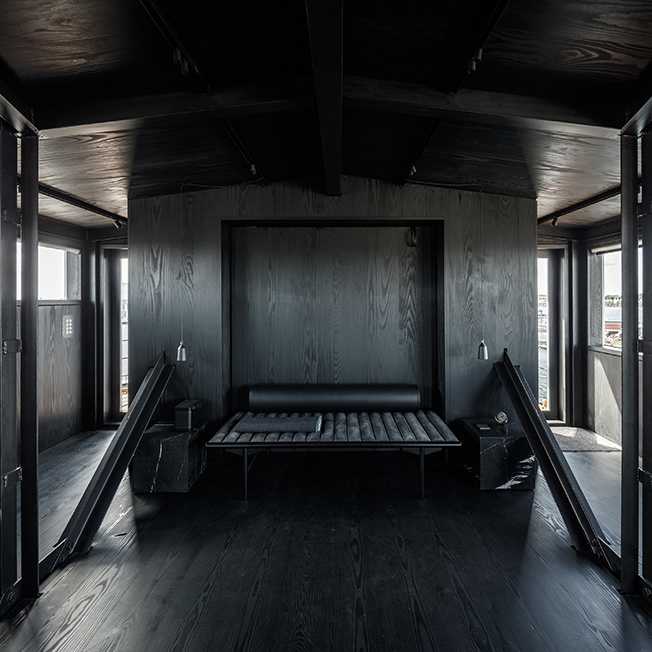
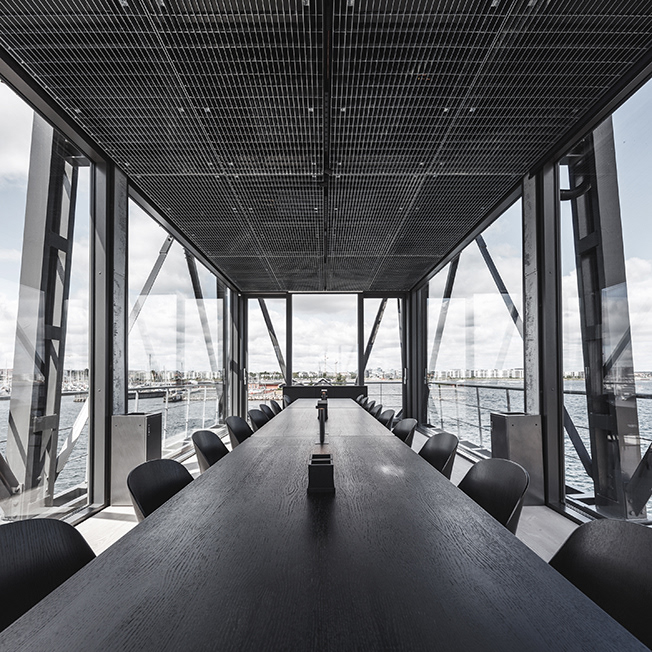
THEKRANE hotel by Arcgency (ph: Rasmus Hjortshøj)
The multi-tiered structure comprises a reception area on the ground floor, a meeting room called the Glass Box on the first floor, a spa and terrace on the second floor, and on top, a private retreat titled the Krane Room with a lounge and terrace.
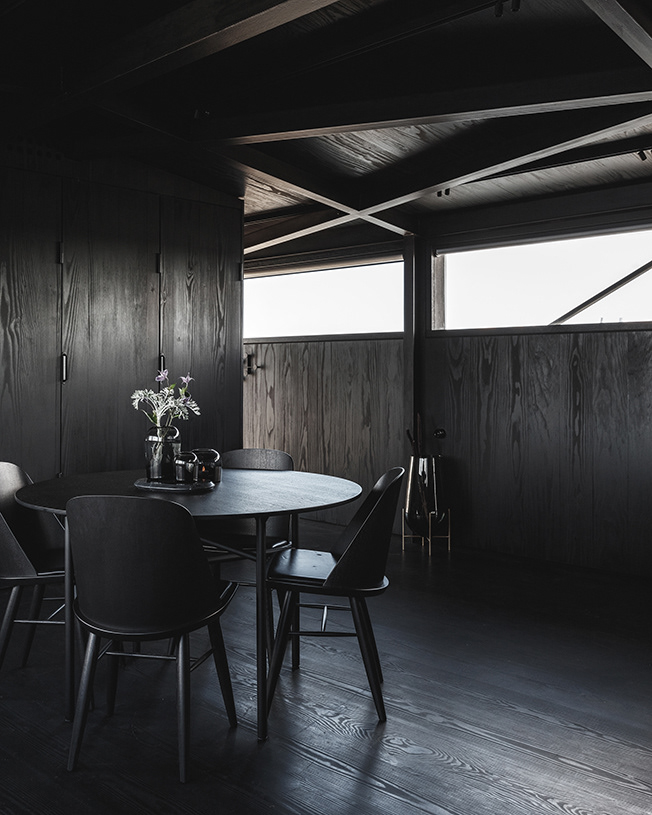
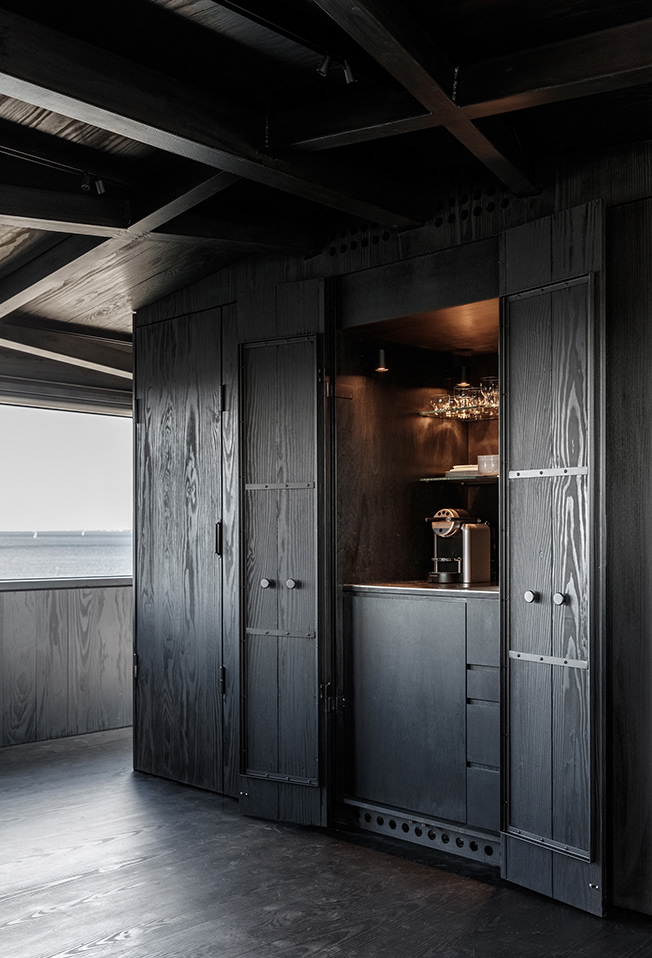
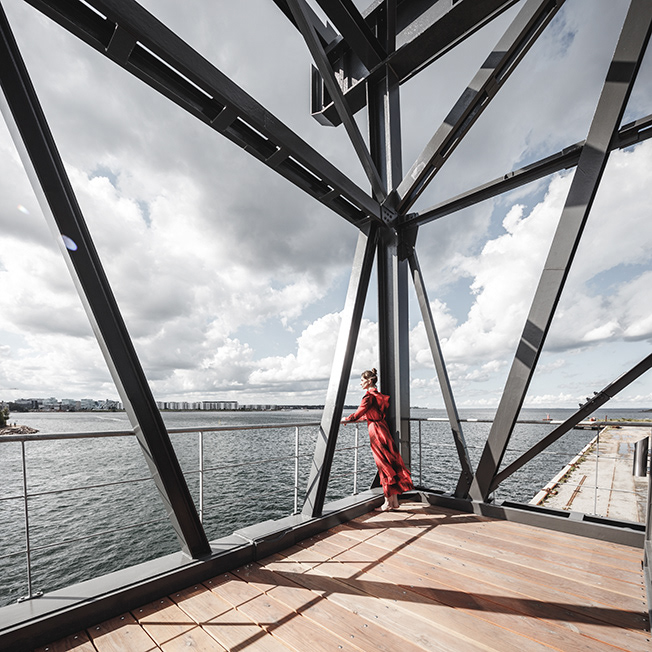
THEKRANE hotel by Arcgency (ph: Rasmus Hjortshøj)
The designers kept the original rough, industrial feeling. The colour scheme is inspired by the structure’s past as a crane for loading coal, black minimizing visual distractions for the guests of the hotel, as well as dramatizing the changing light and breathtaking views outside.
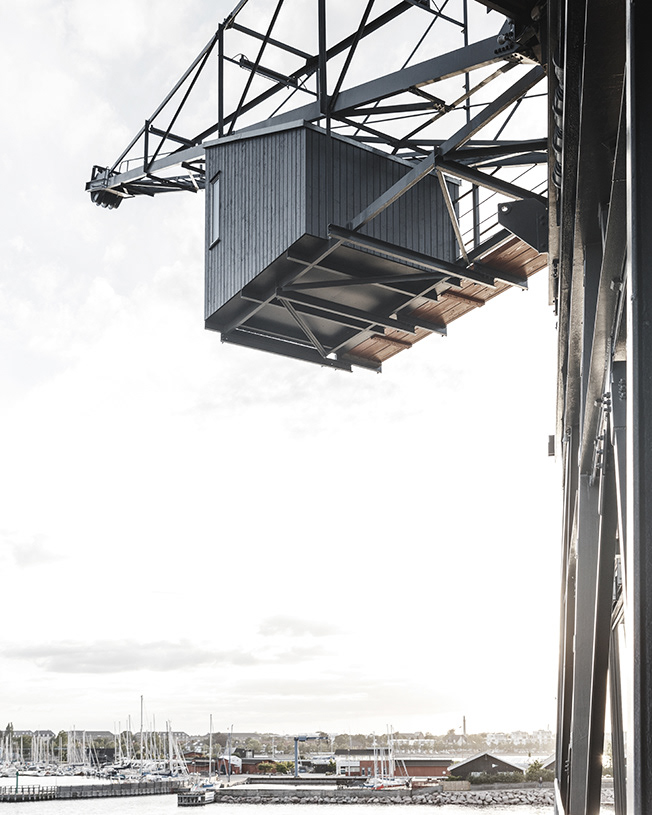
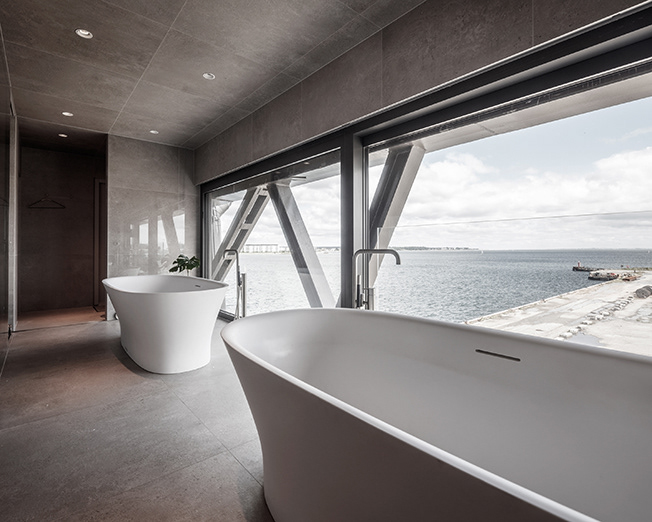
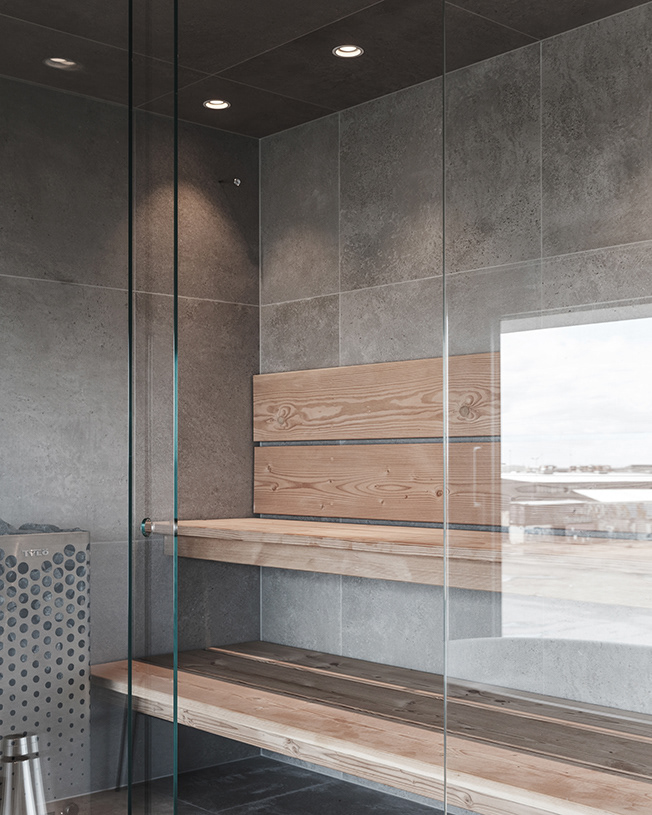
THEKRANE hotel by Arcgency (ph: Rasmus Hjortshøj)
The interior is finished in noble natural materials, such as leather, wood, stone and steel. Not only is the furniture custom-made to fit the concept and the dimensions, the interior is constructed so the primary pieces disappear. The beds, seating and cupboards are integrated into wall panels, while the functional pieces are hidden away. The result is an extra element of discovery, where mundane objects appear to be stunning sculptures. Every element, be it furniture or décor details, is handcrafted by Danish artisans.